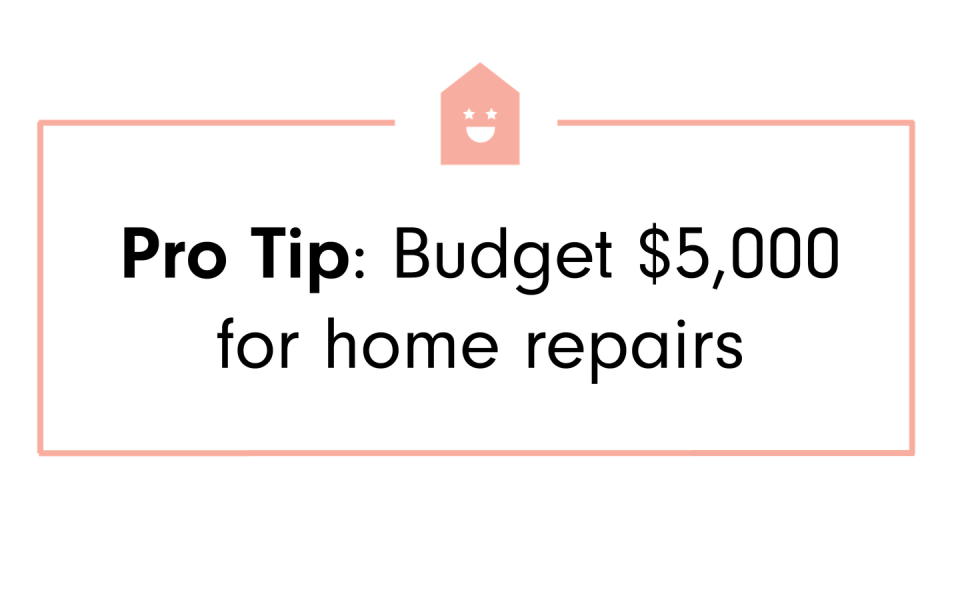Here's Why You Should Bank an Extra $15,000 Before Even Thinking About Buying A House

Once you’ve saved for a down payment on a home, think you’re good to go? Think again. The money you bring to the closing table is a big part of the cost of buying a house—but it’s far from the only one. In fact, you should probably bank as much as an extra $15,000 based on the six major costs most first-timers overlook, and what they tend to cost on average.
1. Property taxes
As a homeowner, you’ll be responsible for paying annual taxes on your property. Property taxes vary from state to state, ranging from about 0.55 percent of property value to almost 2.4 percent. Some municipalities charge additional property taxes. Visit the Tax Foundation to get an idea of the property taxes in your state.
*These figures are all based on the nationwide average.
2. Home insurance = $95.51 per square foot
How much you pay for home insurance also varies based on where you plan on living, but the nationwide average is around $95.51 per square foot, per homeinsurance.com. Use a home insurance calculator to get an idea of how much you’ll have to pay. In most cases, your home insurance and property taxes can be broken down into 12 monthly payments and added to your mortgage payment, held in escrow**, and your mortgage company will pay them when they’re due.
**Basically, this means a third party holds this money until it's needed to be paid out.
3. Home Owners Association fees = $300/year
If your new neighborhood has a home owners association (HOA) or a condo association, you’ll also have to pay monthly or annual fees to this organization for maintaining the common areas (like landscaping or upkeep for the community pool or gym, if you have one). These fees range widely depending on location (anywhere from $100 to $700 per year), but averaged around $200-$300 in 2020, according to multiple sources.
4. Utilities = $2,000/year +
You may be accustomed to paying a power bill as a renter, but homeowners must pay for power, water, and sewer, which can add up to another hefty monthly expense. Before purchasing a home, ask the sellers to share their utility bills for the past 12 months to get an idea of how much you’ll be paying.
5. Repairs and maintenance = $5,000/year
When you own a home, you’re responsible for maintaining it—and that can get expensive, whether it involves repairing an appliance or replacing gutters. New homeowners should try to set back $4,000 to $5,000 for potential home repairs and maintenance, says Wes Woodruff, licensed mortgage advisor at Angel Oak Home Loans in Atlanta.

For instance, when Woodruff and his wife bought their first home nine years ago, they poured all their savings into the down payment. The first week they were in the new house, the refrigerator broke, requiring a $600 repair, an expense for which they had no budget. He recommends lowering your down payment if necessary, in order to save some of that money for ongoing home maintenance and repairs.
"If you could put down 10 percent, but your credit score is really good, it still may be better to put down 5 percent as a deferred maintenance fund," Woodruff says. "A lot of buyers think they have to have 20 percent down, but you really just need 3 percent to 5 percent down to qualify for a mortgage. And if you look at what you’re paying in rent and what you could pay for a house, you’re often saving money by purchasing, even with a lower down payment."
6. Private Mortgage Insurance (PMI) = $2,616/year
It's worth noting, though, that if your down payment is less than 20 percent, your mortgage lender may require PMI. It's typically about .5-1% of the cost of the annual cost of the loan. As Investopedia points out, that could amount to an extra $218 a month, based on the average cost of a home in the U.S. ($261,500, according to 2018 Zillow data).
Mortgage companies often include this cost as part of your monthly mortgage payment, and the idea is that it protects the lender if you default on your loan. Once you've paid off 20 percent of the house, that PMI bill should go away.
7. Inspection and appraisal = $700
In order to get a loan, you'll also have to have your home inspected and appraised—for a cost. Trulia estimates inspections between $300 and $500 and appraisals between $300 and $400.
Follow House Beautiful on Instagram.
You Might Also Like

